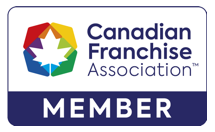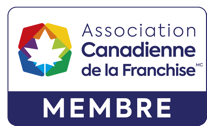On January 1, 2022, an interesting amendment to the Succession Law Reform Act (the ‘SLRA’) comes into effect. Section 21.1 [1] of the SLRA, as amended, is titled the “Court Ordered Validity” section and provides that if Superior Court judge is satisfied that a document that was not otherwise properly executed in accordance with the formal requirements of the SLRA, but nevertheless sets out the testamentary intentions of a deceased or the intention to revoke, alter or revive a previous Will, the court can order that the document is a valid and effective Will, revocation, alteration or revival.
The section is similar to existing “near will” legislation in several other provinces. However, the provisions in Alberta require the Court to be satisfied on “clear and convincing evidence“, while the Prince Edward Island statute requires the document in question to be signed by the testator. Neither of these provisions was included in the Ontario statute.
Estate Courts are occasionally met with situations where the formal requirements of making a will are lacking even though a document clearly expresses testamentary intent. In Ontario, a will must be signed by the testator in the presence of two witnesses or be a holographic will, entirely in the writing of the testator. The new legislation permits the court to give effect to the testamentary intentions of the deceased on proper proof even if there are deficiencies which would prevent the document from being accepted as a will.
There is limited case law from the other jurisdictions where the “near will” legislation exists, but what case law there is indicates that the court is not quick to use the power to give effect to documents which are not properly executed as wills. The courts will wish to ensure that the document being presented in fact represents testamentary intentions and to confirm whether the instructions were intended to be final and complete.
The British Columbia decision of Hadley Estate, Re, 2016 BCSC 765demonstrates how the court can be troubled by requests to validate documents which are not compliant with the formal requirements of the Will.
Eleanor Lena Hadley died in 2015 at the age of 93. She left a will from 2008 which met the formal requirements and distributed her estate to her four nieces. After making the 2008 will, Hadley became involved in efforts to save the “hollow tree” in Stanley Park and made new friends and connections which were important to her as a result.
In 2014 she wrote in a journal which she kept daily a lengthy passage entitled “This is my Last Will“. In the journal entry she spoke of the harassment she had experienced as a result of her civic engagement and said that she wanted to leave her estate to one niece and two friends who had been involved in the Stanley Park efforts and who had supported her.
The journal entry indicated that she sought to see her lawyer about her intentions. Sadly, however, although Hadley did attempt to make an appointment to see a lawyer, she became ill and eventually died before making any further formal testamentary document.
The court was requested by the named beneficiaries from the 2014 document to validate the journal entry as Hadley‘s Last Will.
In coming to its decision, the court noted that there were many factors present in the matter which could lead to a finding that the 2014 document was in fact intended to be a will. The document was made immediately after a significant health episode; the document was clearly in Hadley‘s own handwriting and stated at the top “This is my Last Will“.
On the other hand, the court noted that the journal entry was not clear as to whether Hadley intended to totally revoke her 2008 will and exclude the other nieces. The document further indicated that Hadley was planning to see her lawyer, which led to the possibility that her intentions were not final but would be refined in a more formal document. The court noted that in her communications with the lawyer’s office, Hadley had indicated she wanted to make changes to a 2008 will and did not indicate that she had made a 2014 will.
In all the circumstances, the court declined to find that the 2014 Will was a testamentary document and the 2008 will was admitted into probate.
The Saskatchewan decision in the Holyk Estate (Re), [1992] S.J. No. 400 is an example where the court did use the power granted to it by the Saskatchewan equivalent of the “near will” provision and found that a handwritten document that contained the words “ex” and “Freda” (the name of the petitioner, Frieda Rempel) and a disjointed list of assets and instructions was in fact a holograph will.
The document was found with other documents including a pamphlet entitled “Basic Information Required for Completion of a Will” and was written at a time when the testator was contemplating his own death. The court accepted this evidence that the document in fact had testamentary intent and thus, although not expressed to be a will, was permitted to be admitted into probate as the will for the deceased, with Rempel as the executor.
Courts in Ontario will be concerned that any document presented to them as a “near will” truly expresses testamentary intent and was intended to be the final instructions related to the disposition of the deceased‘s estate.
Any practitioner presenting evidence to the court seeking to invoke s. 21.1 [1] of the SLRA will want to provide the court with ample evidence surrounding the preparation of the document in question and will need to confirm in evidence the intentions of the deceased while making it.
Richard Worsfold is a Partner and Reshma Kishnani is a senior litigation associate at Mills and Mills LLP practising estate litigation. They wish to thank student-at-law Cassandra Fafalios for her assistance in preparing this article.
This article was originally published by The Lawyer’s Daily, part of LexisNexis Canada Inc.
Interested in writing for us? To learn more about how you can add your voice to The Lawyer’s Daily, contact Analysis Editor Richard Skinulis at Richard.Skinulis@lexisnexis.ca or call 437-828-6772.
At Mills & Mills LLP, our lawyers regularly help clients with a wide range of legal matters including business law, family law, real estate law, estate law, employment law, health law, and tax law. For over 130 years, we have earned a reputation amongst our peers and clients for quality of service and breadth of knowledge. Contact us online or at (416) 863-0125.

 2 St Clair Ave West
2 St Clair Ave West


